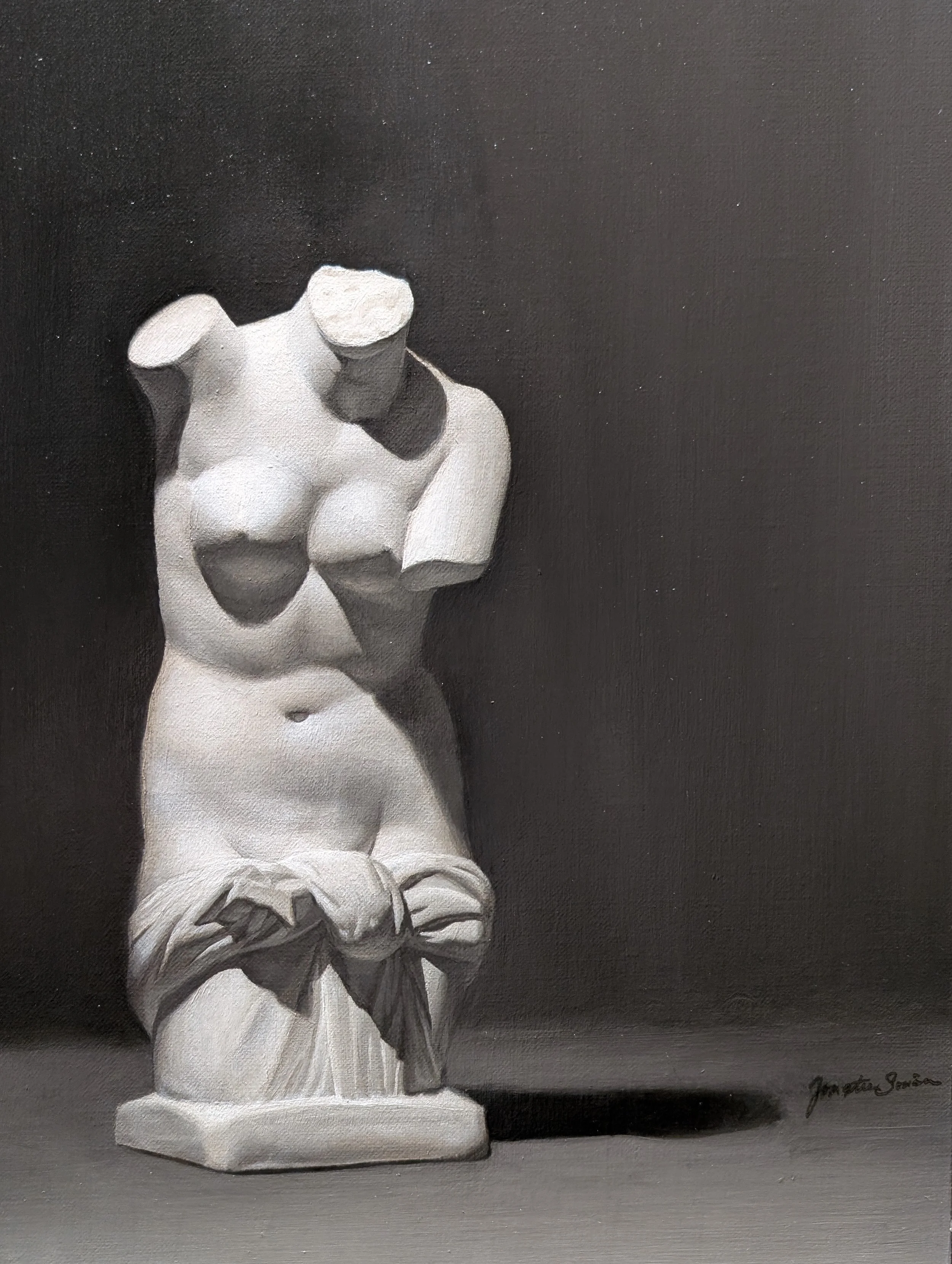It’s Brightest at the End
Jonathan Soriano, 2025
Clawing her way out from trials in the darkness, this figure is blinded by the sheer beauty of what is to come. She experiences both relief at finally attaining her escape and intense fatigue from the long path behind her. As she reaches out for the next stage of her journey, the scars and lessons learned will stay with her forever.
INSPIRATION
https://www.louvre.fr/en/explore/the-palace/ideal-greek-beauty
Grisaille palette
MATERIALS
Cast: Unknown
Oil Paint:
Panel: Artefex Allinpanel Oil Primed Linen Panel (11”x14”)
Brushes: Trekell Spectrum Brushes
PROCESS
Clockwise from left: Reference cast set up, Cartoon, Color Study, First Painting and residual dead coloring
CONCLUSIONARY NOTES
Strong dislike of bristle brushes (feels like nails on a chalkboard). Strong preference for softer brushes for controlled painting. Will have to experiment with different tools.
Strong preference for round brushes for most applications if controlled properly like calligraphy. Filberts mainly used when soft edges are required (dead coloring and edge mixing). Flats are useful for large passages. Brights are generally useful for discrete statements but are difficult to control shapes.
Experiment with different tools to achieve more control.
Use the largest palette knife possible for mixing. Spending 20 minutes creating premixes for the working section of the day is far more efficient than mixing on the fly.
Figure out if it is personally easier to adjust drawing issues during the preliminary cartoon drawing or while painting in masses.
Texture is the bane of my existence. Use soft make up brushes judiciously in the future to avoid texture build up in underlying layers and frustration in later layers!! Use these in short, light, targeted strokes to remove texture.
First painting is not supposed to look blended close up. It is supposed to look like discrete statements. From far away it can optically blend.
Understanding the underlying structure of what you are painting is the KEY! If you can define those accurately and clearly, the foundation will be strong enough to efficiently proceed.
Do not be too wordy with your discrete statements in first painting unless the area requires it. Second painting process with couching will introduce the intermediate value transitions.
Practice edge quality more because of personal tendency to create hard edges. Soft edges denote further distance and non-focus areas. Hard edges will draw attention. Hard edges with strong value jumps will draw even more attention.
Introducing intermediary planes is an easy way to soften transitions.
Backgrounds are very important to help contextualize and establish values.
Creating a believable but uninteresting and unfocused border between table and background is MUCH harder than it appears.
When it comes to bases, especially square ones, you have to take the artistic license to adjust the angles so that it works with the painting’s perspective. Paint what you know not what you see when it comes to creating a cohesive look for the geometric base.
Lead white is great. In later stages, you can basically apply a thin layer straight from the tube to lighten sections and it still allows the underlying structure to come through. However, it will take multiple layers to achieve your brightest bright.
Since values are everything, resolve tendency to create too dark of values for next project. Focus on how much lead white and how little other paint colors is actually required to generate accurate light values.

